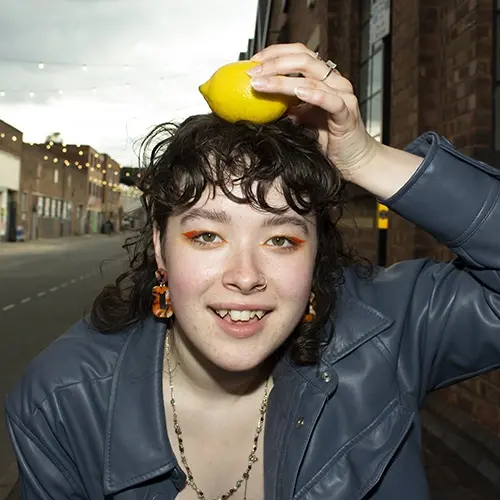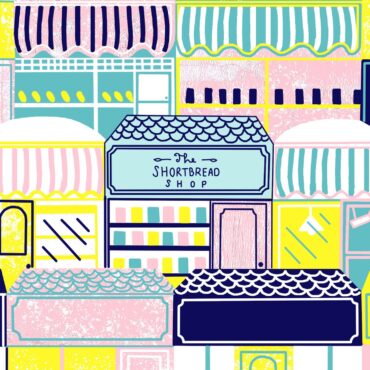We encourage you all to watch the winners announcement, in which our director Guy Armitage talks about all the amazing stories we received and celebrating our winners.
1st Place – Adri São Bento: Just Do It
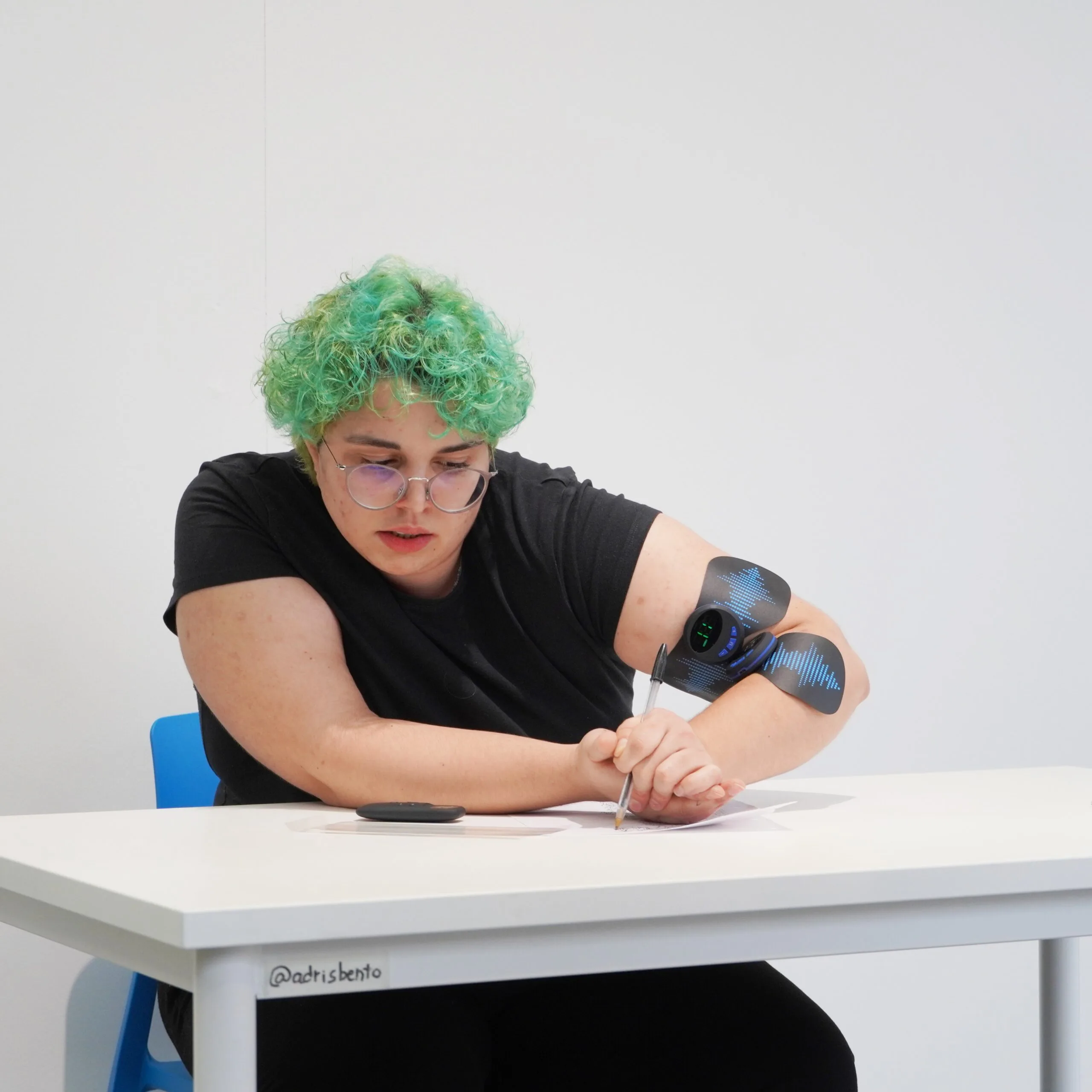
Adri São Bento is a Portuguese deaf interdisciplinary artist working with a variety of media including video, performance and sculpture. After studying a BA in Fine Arts – Sculpture at the Faculty of Fine Arts of the University of Porto, they then moved on to an MA in Contemporary Art Practice – Critical Practice at the Royal College of Art in London. Adri describes their work as coming from their “experience as a crip and queer person and resorts to empathy-building strategies and interactive experiences to contribute to a more inclusive and healthier environment. It reflects on the structures shaping the contemporary world to raise awareness about the impossibility to be totally inside the norm”.
Adri’s winning piece, ‘Just Do It’, involves them being connected to two TENS units to their dominant arm and proceeding to write columns of the phrase “Just Do It” on a sheet of paper. The shocks cause their arm and hand to move involuntarily, and as they gradually increase the intensity of the voltage, their writing becomes illegible.
2nd Place – Ziyoo Hwang: The Fog
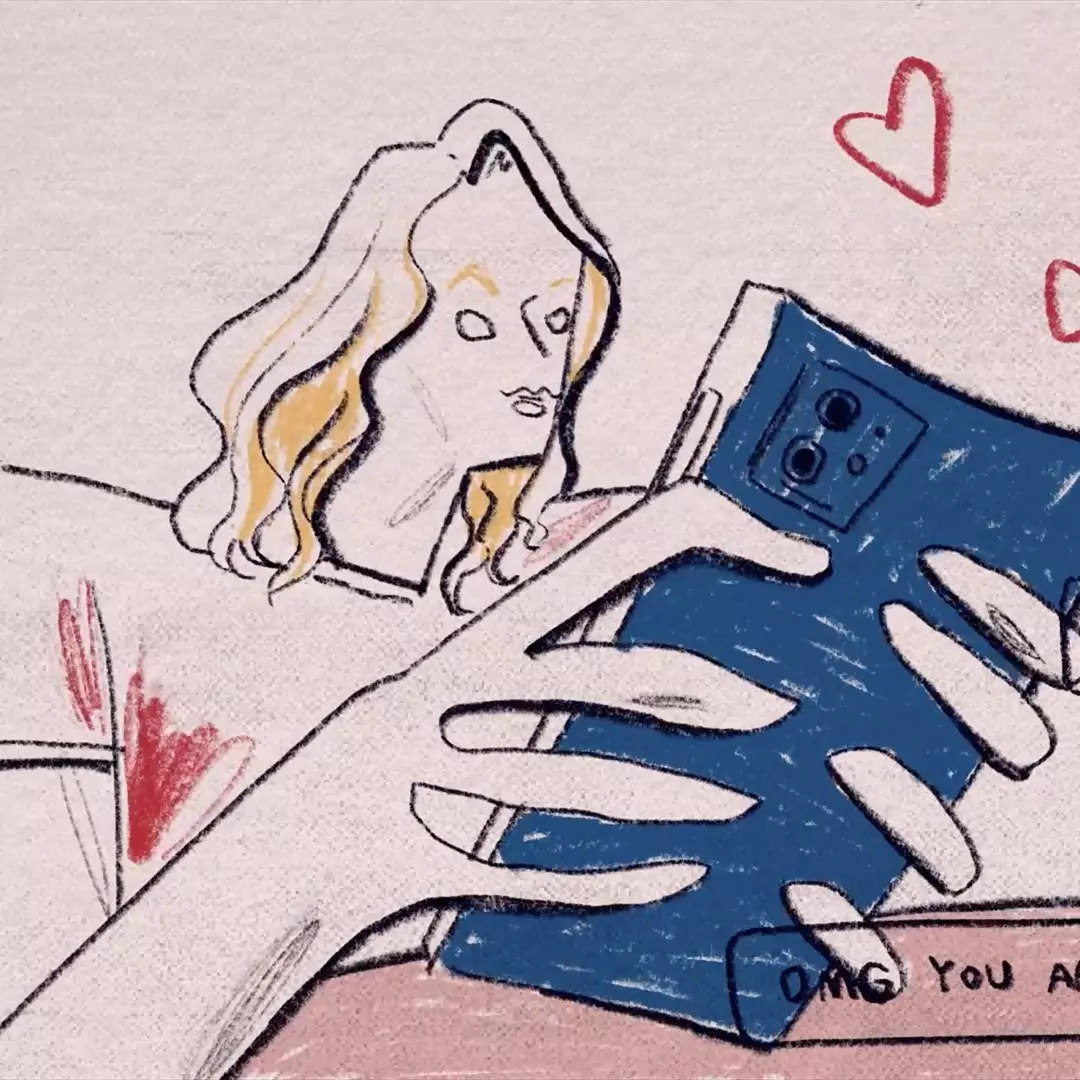
Ziyoo Hwang is an illustrator and animator originally from South Korea who now lives in the UK. After studying a BA in Illustration at Brighton University, they undertook an MA in Visual Communication at the Royal College of Art. After studying illustration, they fell in love with moving images and are now adapting it to share their stories.
‘The Fog’ is based on Mark Fisher’s idea about widespread anxiety and depression in our society caused by capitalism. Mark Fisher states that “many forms of depression are best understood and best combatted through frames that are impersonal and political rather than individual and psychological”. Virginia Woolf described her depression as a ‘nebulous fog’. Ziyoo saw this nebulous fog covering us, working as the filter, altering our perception of our lives, making us more anxious and depressed. Where does this fog come from? What is it formed of? Is there a way out? This is their animated attempt to catch the fog.
2nd Place – Jennifer Louise Martin: Hear My Cry
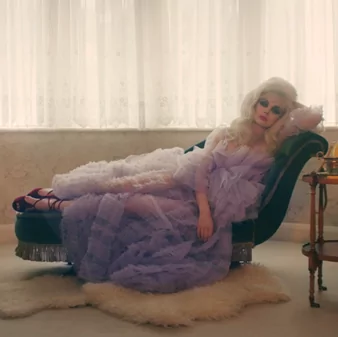
Jennifer Louise Martin is a visual multi-disciplinary artist from London. Martin creates collages using magazine cuttings and her own photography as her source material to inform her large-scale mixed media paintings. These are charged with an underlying psychological process depicted through the materiality and language of paint. Martin is influenced by fashion photography and is an avid collector of vintage patterns and textiles, exploring hand embroidery, knitting and the manipulation of fabrics in her work.
‘Hear My Cry’ is Jennifer Louise Martin’s first film which tells the story of her experience having post-natal depression. It further explores the narrative in her paintings and utilises her visual aesthetic in moving image, manifesting her story and its psychological dimensions on film. Jennifer’s paintings were used as both backdrops and inspiration for the set décor which brings together her skills as a multi-media artist. It tells the story of the woman in the painting based on the artists’ own personal memoirs, emotions, intrusive thoughts, and recurrent dreams that she encountered during her suffering with postnatal depression (PND). The emphasis is on the new mother trying to maintain the ideals of a social construct yet tormented by the trickery of her mind and her symptoms of the destructive illness.
3rd Place – Charmaine Chanakira: The Black Experience
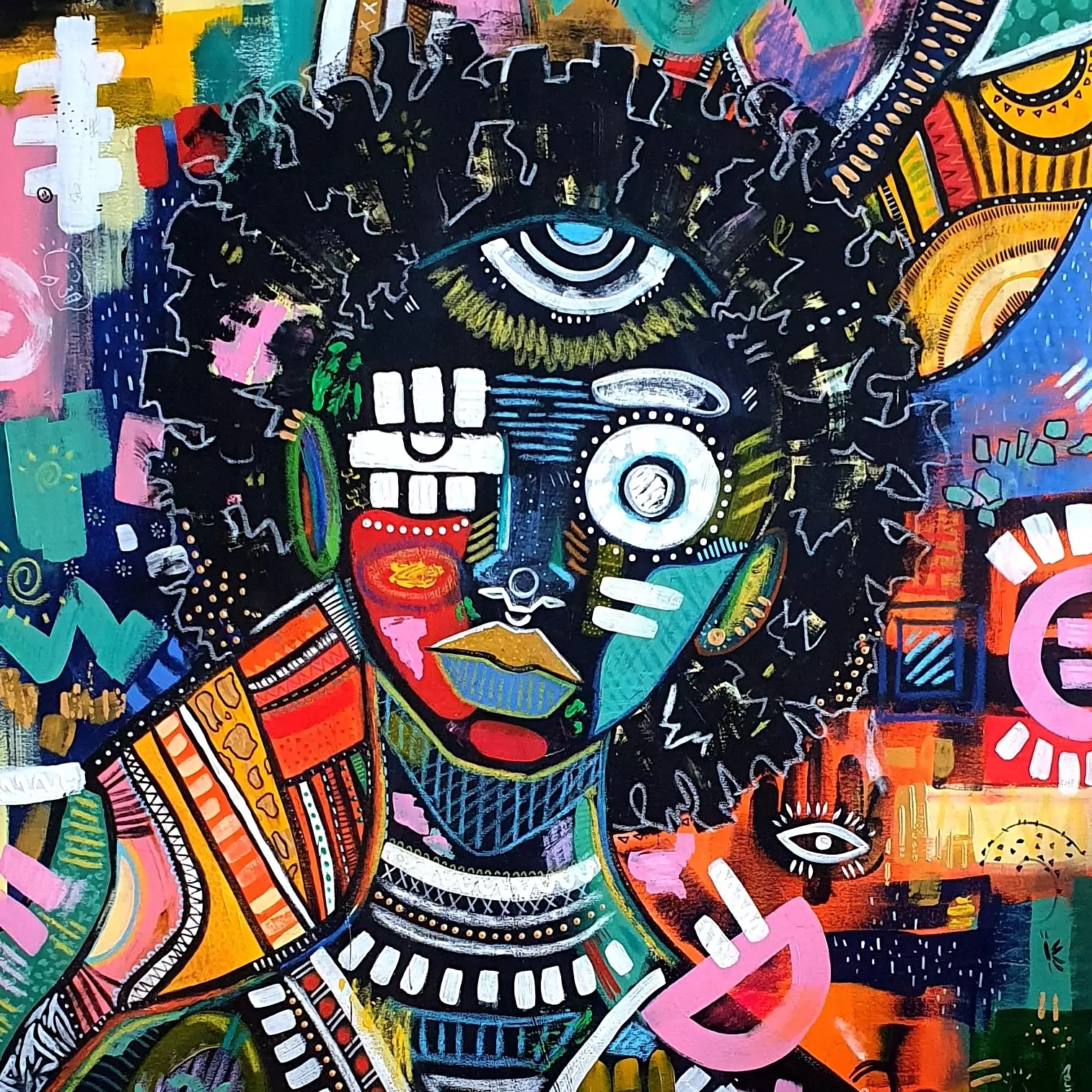
Chanakira is a Zimbabwean-born, London-raised Afro Expressionist. She is self-taught, with no formal education in art or illustration and her artwork is generally generated by impulse and emotion. Her collections are inspired by my experience as a black/ Zimbabwean woman living in the UK. Coming from a Zimbabwean background, Chanakira always found it difficult to open up and talk about her feelings and experiences. The idea of therapy and seeking help for mental health and social issues was very taboo in her community which made it very hard for people like her to get any help and support. Having felt like this for most of her life, she wants to challenge the perception of the black experience and mental health by creating a collection that opens up a dialogue about being black in the UK.
‘The Black Experience’ is inspired by her experience as a black/ Zimbabwean, immigrant woman living in the UK. It explores mental health, racism, sexism and aims to challenge the society we live in. The series of works create a depiction of life in the black community and challenges preconceived notions.
Public Vote – Lucy Cross: Unborn
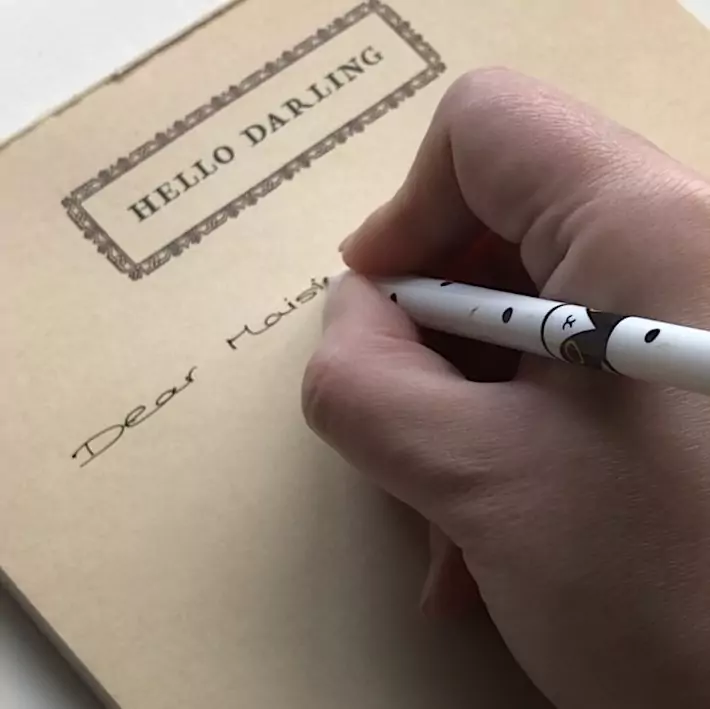
Lucy Cross is a self-professed endometriosis warrior, which she has had since she was 11 years old. As a result, it has severely impacted her mental health and wellbeing. Most importantly, her experience is not a rare one and is representative of many people living with endometriosis, as well as disabilities generally. Many conditions affecting women are not widely known about or discussed; endometriosis, adenomyosis, polycystic ovary syndrome and premenstrual dysphoric disorder all feature in her work. Lucy wants to shine a light on them as she’s tired of women suffering more than necessary because they are being shunned, silenced, gaslit and judged when it comes to their health.
‘Unborn’ is a video recording of a poetry recital. The poem takes the form of a letter, written to her imagined, unborn daughter, Maisie. It tells a painful and powerful story, juxtaposing light with dark, whilst being informative, educational, emotive, relatable, and hopefully change-inducing. Endometriosis has a notoriously long-time frame between the onset of symptoms and diagnosis, and this must change. Her words address the physical and psychological battles that disabled people face, highlighting areas which are often stigmatised: menstrual health, infertility, miscarriage, unemployment, suicide, mental health issues and invisible disability.
Share
Authors
